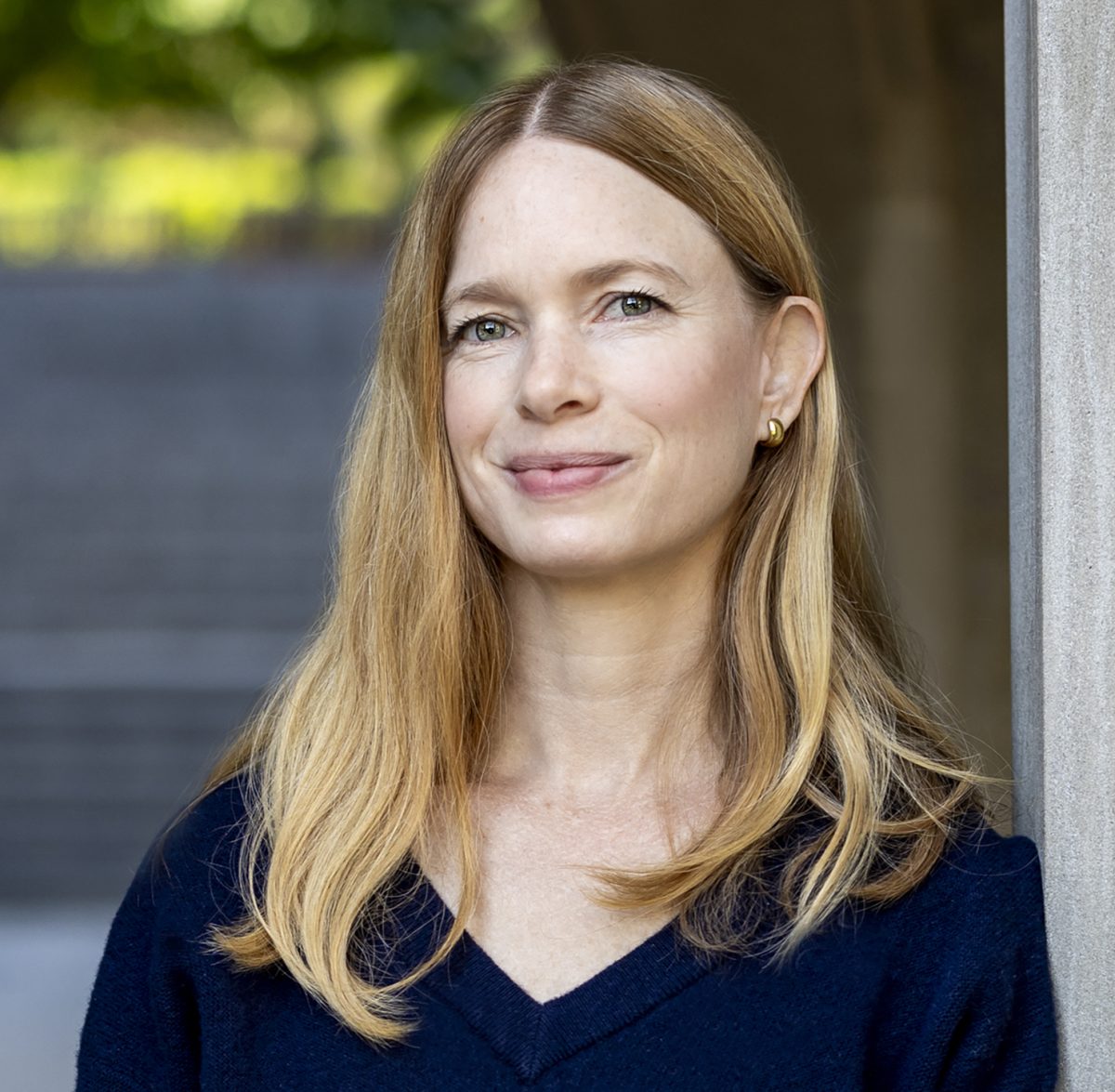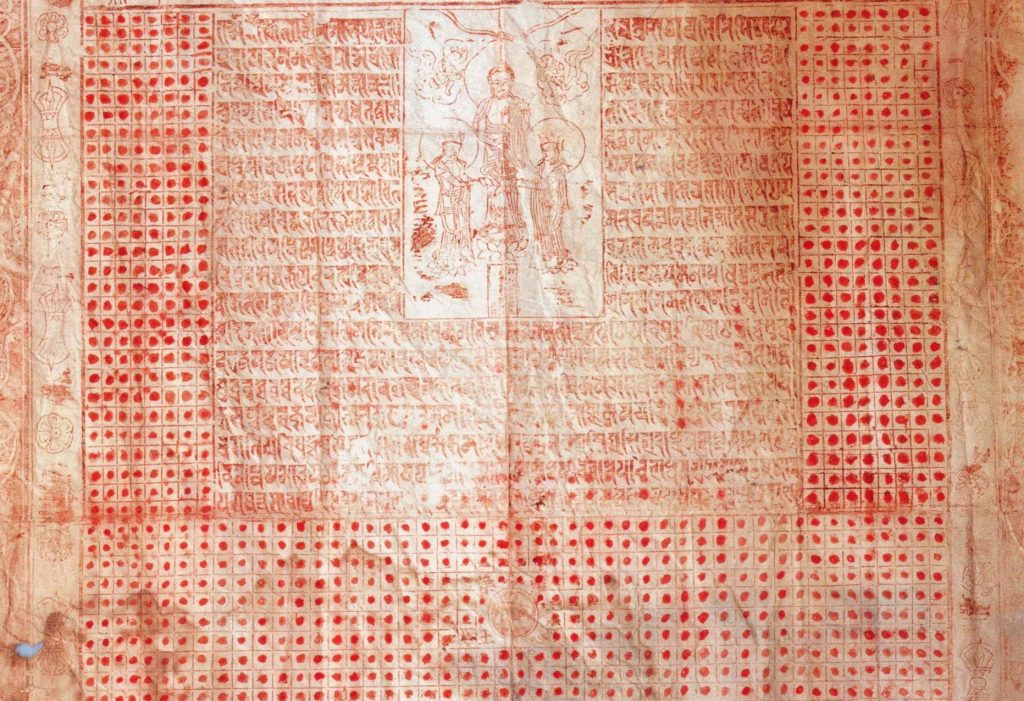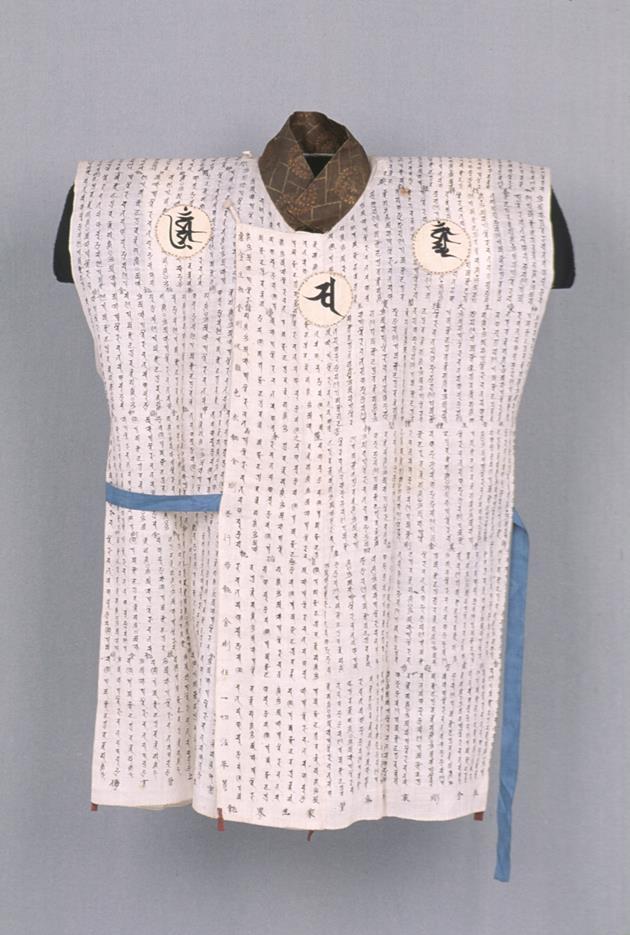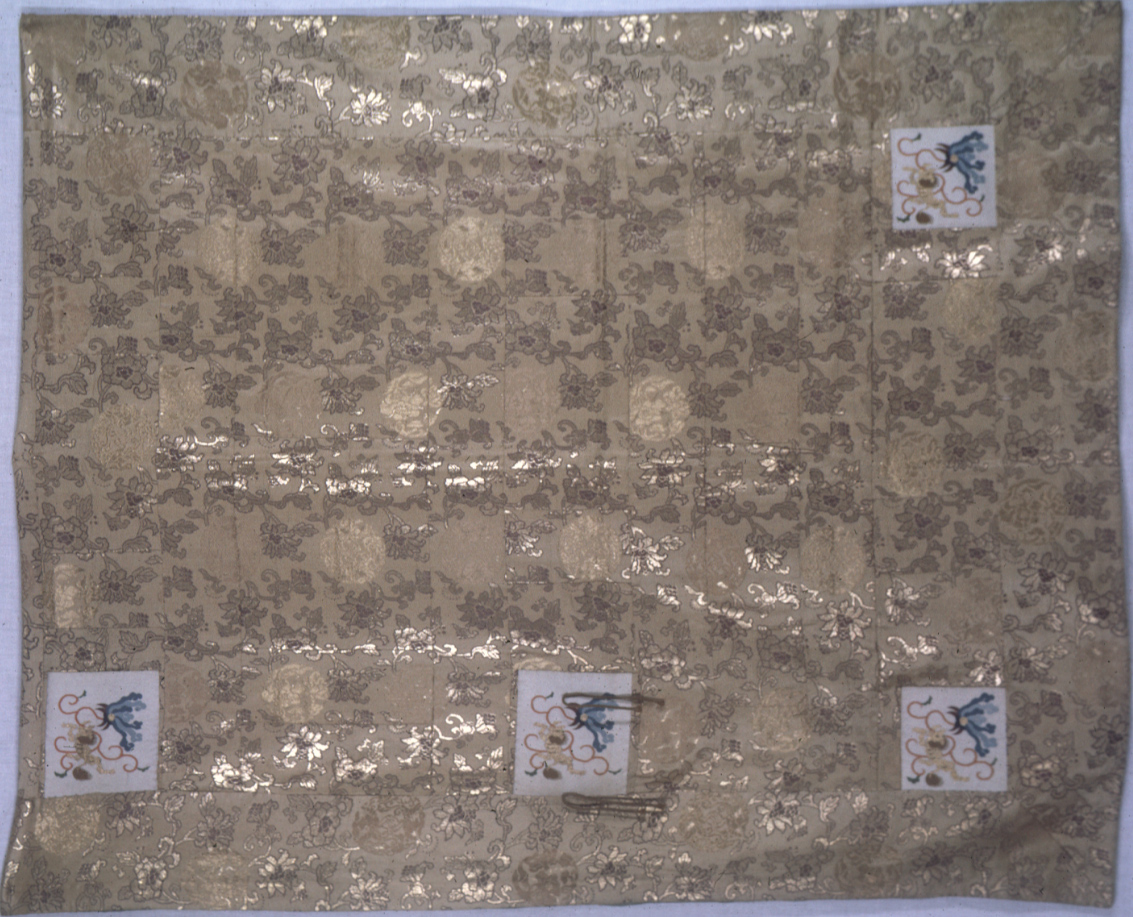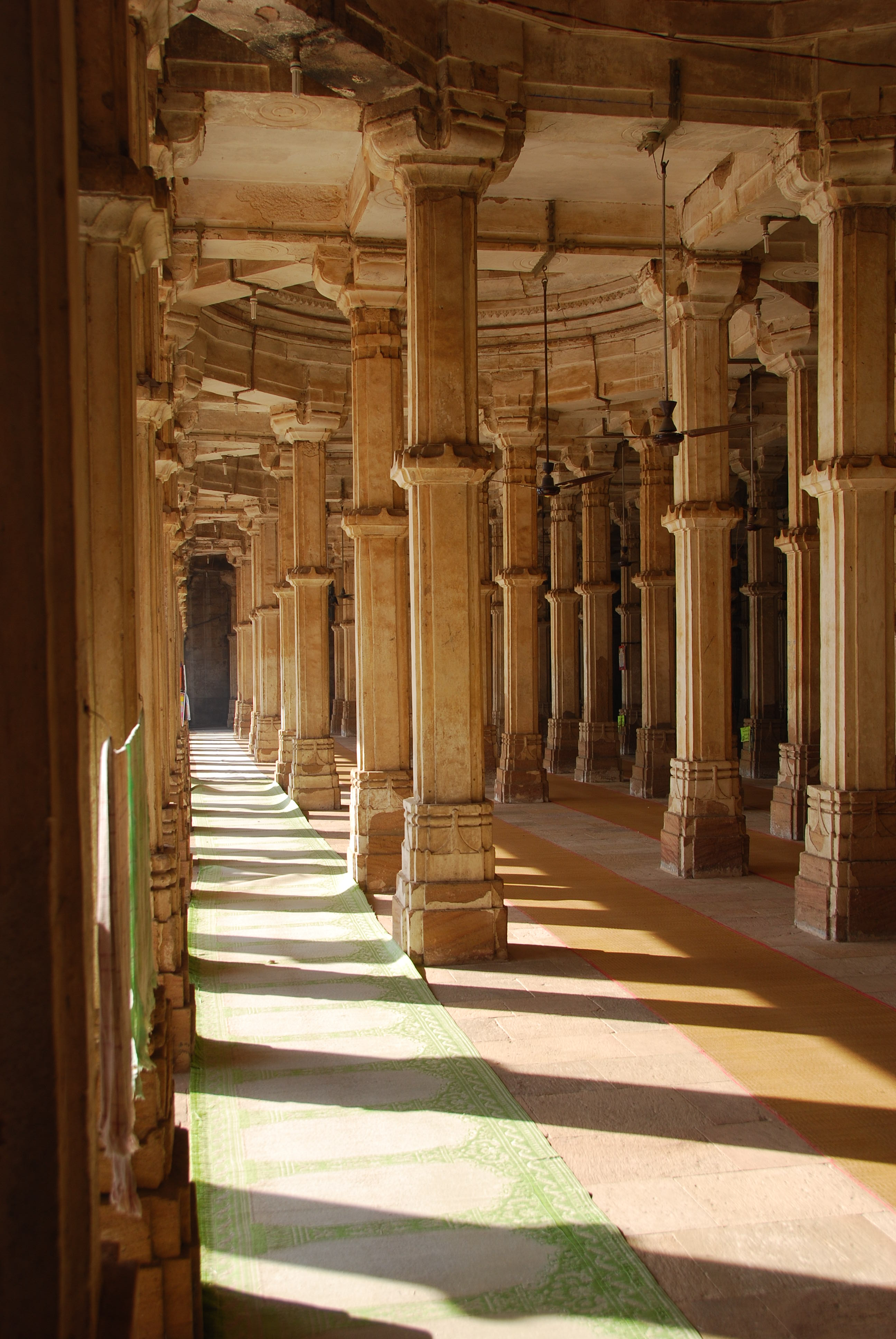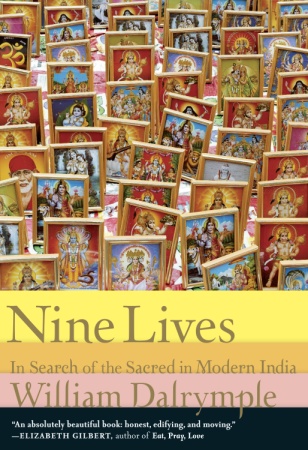Professor Aurelia Campbell on the Rarity and Artistry of Chinese Buddhist Burial Shrouds
SAM’s Gardner Center for Asian Art and Ideas presents the 2023–24 season of the Saturday University Lecture Series, exploring various topics on Asian art and culture across time. On Saturday, April 13, Aurelia Campbell, Associate Professor of Asian Art History at Boston College, will examine the artistry and significance of the elaborate Buddhist burial shrouds that were excavated from the graves of high-ranking men and women from China’s Ming and Qing dynasties. In advance of her talk, SAM spoke with Campbell about what visitors can expect to learn about in her upcoming talk, her first encounter with a burial shroud, and prevalent misconnections of Buddhism.
SAM: What can the public expect to learn about in your upcoming Saturday University lecture? What initially drew you to this topic?
AURELIA CAMPBELL: My talk will introduce Buddhist burial shrouds excavated from tombs dating between the fifteenth and nineteenth centuries, during the Ming (1368–1644) and Qing (1644–1911) dynasties in China. The shrouds vary in form depending on the identity of the tomb occupant (for instance, those of lower-ranking individuals are printed on paper, while those of higher-ranking individuals are embroidered on silk). Some shrouds are executed in a Chinese style while others reflect a more Tibetan style, which was popular after the Mongols ruled China in the 13th and 14th centuries. Despite these differences, the shrouds all combine text and image to create a kind of power object that was thought to help bring about an auspicious rebirth. I was initially drawn to the topic of Buddhist burial shrouds after first encountering one in 2016. Since then, I have found out about several others while conducting research for my new book project on Ming dynasty burials. I now know of at least five burial shrouds, all of which are quite extraordinary, and I eventually plan to publish my research on them in a journal article.
SAM: Academic research often involves travel. Is there a travel experience related to your lecture experience that you could share with us?
AC: Given the fragile nature of these burial shrouds, they are rarely on display in museums. Moreover, only a few survive and, in some cases, they are associated with very lofty individuals, including emperors and empresses. It is therefore difficult, if not impossible, to obtain access to them in China. Perhaps surprisingly, my first encounter with a burial shroud, and my only travel related story pertaining to one, was in California. This shroud was part of an exhibition entitled Royal Taste: The Art of Princely Courts in Fifteenth-Century China held at the University of Southern California Pacific Asia Museum in 2016. At that time, I had never heard of this burial shroud, nor did I know that Buddhist burial shrouds even existed China. The shroud was massive and was entirely covered with text and image printed in red. I probably spent a half hour looking at it, totally captivated. Sometime soon, I will travel to see another burial shroud in the collection of the Jacques Marchais Museum of Tibetan Art on Staten Island. Beyond that, I’m not sure I’ll be able to see any of the precious shrouds in person, unfortunately.
SAM: The Seattle Art Museum is home to nearly 25,000 works of art. What’s one artwork from the museum’s collection that resonates with you? Why?
AC: The Seattle Art Museum has a fantastic collection of East Asian art, so it is difficult to choose just one. But I’m fascinated by this sleeveless undergarment with Buddhist text from 19th century Japan. The garment, made of hemp and silk and printed with Sanskrit and Chinese Buddhist text, was meant to protect the wearer from evil spirits. According to the object’s description, it may have been worn during rituals or when going into battle. The talismanic function of the sacred writing on this garment is analogous to that of the burial shrouds that I will be discussing in my talk. However, it obviously differs in the sense that it is fabricated into an item of clothing and worn by the living. I would love to be able to study this garment more closely.
SAM: Is there anything we didn’t ask that you want to share with the public in advance of your lecture?
AC: It might be useful for the audience to think about what the burial shrouds examined in my talk tell us about what Buddhists living in the Ming and Qing dynasties believed and how they practiced. I have often felt that there is a general misconception that Buddhism is not a religion, but rather a “philosophy” centered on meditation. While that may be true in some times and places, these shrouds reveal that spells, magic, rituals, and notions of salvation were actually much more closely associated with lay Buddhist practice at this time than was meditation.
SAM: What’s one book you’d recommend to those interested in learning more about your lecture topic?
AC: Paul Copp’s The Body Incantatory: Spells and the Ritual Imagination in Medieval Chinese Buddhism (New York: Columbia University Press, 2014) provides an excellent introduction to the apotropaic function of Buddhist writing in China. He investigates spells inscribed onto a wide range of objects that were situated in temples, worn on the body, and buried with the deceased. The book is richly illustrated and full of interesting material that has not traditionally been examined in academic scholarship. Although the book focuses on an earlier period than I will cover in my talk, it helps set the scene for the Ming and Qing period by demonstrating the longstanding perceived efficacy of Buddhist texts and images in a funerary context.
– Simon Tran, SAM Manager of Public Engagement at the Seattle Asian Art Museum
Photos: Headshot by Ashley Craig. Wang Shancai 王善才, ed. Zhang Mao fufu hezang mu 張懋夫婦合葬墓 (The tomb of Zhang Mao husband and wife). Beijing: Kexue chubanshe, 2007. Sleeveless Undergarment with Buddhist Text, early 19th century, Japanese, Hemp and silk with ink, 36 x 24 in. (91.44 x 60.96 cm), Purchased with funds from the Estate of Pauline King Butts, 93.166.
